[Reading Time: 25-30 minutes]
Now well into my fourth decade (I recently turned 32), I’ve come to a realization: I really don’t know that much. On a yearly basis, I’ve come across new information that either wholly dispels, or calls into serious question, the beliefs I previously had, the stories I told, and the narratives in which I lived. Just how many things, I wonder, am a “pretty sure of” right now that will later prove to be embarrassingly stupid (or as the British inexplicably pronounce it, “Schhhtupid”)?!
Of course, this doesn’t apply to everything I thought I knew. If it was everything, or even most things, I probably wouldn’t be able to function properly. In fact, there are some things that I’ve realized in each decade thus far that are absolutely obvious. It feels silly to even have to mention them, because we all know how obviously true these things are, but I guess I’ll do it anyway just for contrast:
- Decade 1: Jim Carrey is the best actor of all time
- Decade 2: the only way to eat cereal is to mix several together, add in fruit, and finish by drinking the flavored milk (a corollary: don’t trust anyone who eats plain, milk-less Cheerios)
- Decade 3: anyone still using dry toilet paper instead of baby wipes has absolutely no fucking clue what they are doing.

See, I told you, obvious truths.
Anyway, those undeniable truths aside, there are several big ideas that, year after year, are constantly eroding. In fact, if you buy the findings in the areas of behavior science and psychology the last 20-30 years, the very fact that most truths are, like the three I listed above – undeniable – blinds us to the possibility that some of those facts are completely false or misleading. For example, take what I thought I “knew” about breakfast…
The Breakfast Bias
For most of my life, I believed that (a) breakfast was the most important meal of the day and (b) “OMG, I must eat as soon as I wake up or I can’t function. I mean I will litttterrrallllyyyy starve!” [“literally” in the SGS version].
Starve? Really? Then what happened on all of those Yom Kippurs? [“Yom Kippur” is a Jewish holiday, people. On YK, we Jews fast. Please try to stay with me, you goy bastards! Just kidding. But seriously…]
This “truth” was first called into serious question after reading an admittedly bro-ish-ly-titled, but extremely useful and refreshingly evidence-based, book called, Engineering The Alpha by John Romaniello and Adam Bornstein. Both have great, evidence-based blogs, btw (click on their names if you’re interested).
They showed me that most of the buzzfeed-ish articles and even studies stating that “breakfast was the most important meal” were misleading. For example, this widely-cited study linking breakfast eating to higher incidence of heart disease.
The problem? This study only shows an association. It shows that, for instance, when they asked these 20,000 participants if they regularly ate breakfast, more people that responded “infrequently” also ended up with heart disease. This is NOT the same thing as the absence of breakfast causing heart disease. When you look at the study, they even tell you: “Participants who did not report eating breakfast were younger than those who did, and were more likely to be smokers, employed full time, unmarried, less physically active, and drink more alcohol.” So people who don’t eat breakfast tend to be people who do unhealthy shit.
But even more startling than the above – that the exact opposite might be truer. That is, skipping breakfast may provide benefits that outrun eating it. [They called this “Intermittent Fasting” but the true benefit seems to come from what’s called “Time-Restricted Feeding. I will write about this in a later article, but if you are curious now – see Dr. Rhonda Patrick’s podcast with Dr. Satchin Panda].
Since reading that book, for at least 75% of the time, I have been skipping the very meal that valued the most (especially if I was eating cereal). And you know what happened?! Beyond all rational belief, I didn’t “literalllyyy” starve. In fact, I, like many, many others, find that I am much more productive in the morning skipping breakfast than I am after eating it. Some of you may feel like you won’t have “energy” or you need something before exercising or writing. I am not saying you definitely don’t – I am just saying that perhaps that “feeling” should be tested.
And there have been many more misleading “truths” like that one… one of them being front and center and part of the impetus leading to My Vegan Experiment…
Welcome Back
Welcome back to the Intelligent Eater – that (seemingly) arrogant-as-shit-ly named aspect of Ze’ Dilettante where I try to convince you that all of the leaves and birdseed I consume is somehow improving my life.
My last attempt to do so was in Part 1 of My Vegan Experiment. If you didn’t get a chance to read that, I’d probably start there, as it explains the basis for the experiment and the structure. Skipping part 1 would be like skipping Home Alone 1 and going right to 2. As George Costanza reports, doing this will guarantee only one person is lost in New York- you. (Please hold your applause until the end).
In Part 1, I made the case that, for the first quarter century of my life, I had bought into two “truths”:
- we need a ton of protein every meal; and
- “protein” is synonymous with “animal.“
For about as long as I held onto the I Need Breakfast or I’ll Starve story, I held onto a story about us needing lots of protein every meal to achieve optimal health, and that protein, by definition, equaled animal flesh. Crucial to understand here is that I held both beliefs without sufficient evidence or testing.
But after ignoring the evidence against those two axioms for years, I am now coming to believe that perhaps they were mistaken, incomplete, or at the very least, worthy of investigation. In order to find out for myself, I embarked on this One-Year Vegan Experiment.
In this Part II of My Vegan Experiment, I will show the results of my year-o-vegan and complimentary blood tests (not ‘complimentary‘ as in free – far from it).
 The results I show you, though, will not be ones that we are familiar with seeing – those of weight-loss, lean body mass, or even reports of “feeling” good. Of course, these subjective and more superficial factors are not totally useless. I mean, who wouldn’t want to feel good and have the abs of AC Slater or Tyler Durden? However, those factors do seem to fall short when what we are after are objective facts about our health. One way to objectively measure your health, Researchers say, is to simply eat a certain way and get your blood tested.
The results I show you, though, will not be ones that we are familiar with seeing – those of weight-loss, lean body mass, or even reports of “feeling” good. Of course, these subjective and more superficial factors are not totally useless. I mean, who wouldn’t want to feel good and have the abs of AC Slater or Tyler Durden? However, those factors do seem to fall short when what we are after are objective facts about our health. One way to objectively measure your health, Researchers say, is to simply eat a certain way and get your blood tested.
Health, an admittedly thrown-around word, we will define here as the aggregate and optimal performance of our bodies’s systems: our heart, blood, brain. According to the Researchers (Nerds in lab coats actually doing the science, as opposed to Marketers, who write popular books and sell you health products), various measurements of blood might be important to understanding our overall health at any one time. And, over time, the aggregate paints the picture of our health.
Those markers fit into four buckets:
- Hormones (like testosterone and estrogen),
- Lipids (involving cholesterol and cholesterol-related markers, omega 3s),
- Vitamins and Minerals (e.g. magnesium, vitamin d) and
- Inflammation Markers (CRP, TNFa).
In the rest of this article:
- I’ll display and analyze my results from where I started to where I ended up
- You’ll find out what was particularly striking about the massive changes in my blood after just 6 weeks of a plant-based diet
- You’ll see how far I progressed, and in what areas I actually backtracked a bit
- Lastly, I’ll discuss what I learned and what still remains unclear
What I Am Measuring
[And What Those Measurements Mean… In English]
[NOTE:You’ll notice that my baseline test was taken months prior to the 6-Week Test. The reason for this was to ensure I was testing based on my “strict paleo-like hybrid diet.” I took the test while I was definitely eating like that. Then I went to Spain for 3 months (partly captured here) and didn’t want to eff up the results. After I came back from Spain, I made sure to return to that paleo-ish diet for three weeks prior to starting the plant-based diet. Then I started the day after Labor Day 2016 (September 6).]
IN PART 1 OF THIS ARTICLE, I showed you where I started. Based on what I called a paleo-ish hybrid diet – one focused on whole foods like veggies, lean and organic meats, berries, nuts and seeds – and small amounts of non-paleo elements – beans, quality dairy, whole grains – I figured my blood test would come back about as good as one’s blood could look. But I was mistaken.
To my surprise and confusion, my blood was basically average. I mean, I was eating what I thought of as this great diet, keeping alcohol to a minimum (compared to my frat-dawg friends), and working out 4-5 times per week. I was strong, pretty fit, and, unrelatedly, had a nice looking tan. That combo seemed to me to be an obvious precursor to wonderfully healthy blood. Blood that any vampire would die for!
 But my blood was not vampire-ideal as I had imagined – Bill or Eric the vampires or any addict of V would be highly disappointed. Again – those results are here.
But my blood was not vampire-ideal as I had imagined – Bill or Eric the vampires or any addict of V would be highly disappointed. Again – those results are here.
“OK, Justin, we see this thing – but what does it actually mean? Can you just explain what you are testing, preferably in English, and tell us what the hell this sciency crap says?”
Surely.
As for those geeks who want more science, you can comment or email me and I will either answer. That, or I’ll just give you an atomic wedgey and steal your lunch money…nerd!
What I Am Measuring: Four Main Categories
(1)Cholesterol (And Cholesterol-Related Stuff)
WHAT IT IS? Cholesterol is a fat molecule vital for – (i) building the outer structure of our cells (cell membrane) and (ii) providing the raw material for hormone production. So it is a good thing. But, it seems that our bodies produce most of what we need via the cells themselves and the liver. So it isn’t clear how much we need to consume.
WHAT DO I NEED TO KNOW? We require it, but we don’t seem to need or want too much. The problem is, as the Center for Disease Control has said: “High cholesterol has no symptoms, so many people don’t know that their cholesterol is too high.” So we need to get it tested.
One general number to keep in mind is or total cholesterol. Most US physicians that I’ve come across recommend keeping it below 200 (the approx. US average) which they call “low risk.” Then again… the #1 killer in the US (and world) is heart disease, so, ya know, maybe average isn’t so good. And, indeed, studies have suggested that we probably need to rethink these levels [For LDL, for example]
RISK OF TOO-LOW CHOLESTEROL?! There have been studies showing that cholesterol levels below 160 lead to increased risk, at least in an Asian population studied. However, note that this increased risk applied to only those people who also smoked, drank a lot, and had high blood pressure.
Additionally, this is usually a concern for only the elderly who are malnourished or have some other severe maladies. As the Scientific World Journal put it in one study: “Low TC [total cholesterol] has been identified as a risk factor for older adult mortality but is commonly attributed to the fact that low TC levels indicate malnutrition, chronic infections, and subclinical or hidden diseases”. The study went on to point out, and reassure us: “High levels of lipoproteins such as TC, LDL-c, and TG are widely known as risk factors for total and cardiovascular mortality in the general population.”
Other Cholesterol-Like Things
Cholesterol can be broken into smaller pieces and associated measurements that some experts believe are more indicative of heart disease and health risk. These smaller pieces or related components (“related” as far as the non-scientist is concerned) are as follows: LDL, HDL, Triglycerides, LDL-p, Small, Dense LDL (there are more but we’ll just look at these). I’ll explain each quickly.
-
LDL and HDL
What are they? They are vehicles for cholesterol. Cholesterol (fat) cannot travel through the blood (water-based) in the same way that oil and water don’t mix. To solve this problem, the body provides little transporters to move it through the bloodstream / arteries, etc. LDL and HDL are the names of these vehicles – each with a distinct function.
The Difference between LDL and HDL. LDL Takes cholesterol from the liver (where much of it is produced) to the cells. HDL goes to collect the cholesterol, cholesterol waste, and other fat molecules from cells, blood, arteries and bring it back to liver. This is why HDL is “good” and LDL is “bad.” LDL puts fat into the blood and cells, while HDL, like a vacuum cleaner, takes it out. Although we need cholesterol, too much of it, especially certain sizes of it, can cause clogs and ruptures.
[To get a quick visual, watch this 3 min video]
What Levels Do We Want? Although most physicians will tell you that LDL below 100 is good – studies like this one suggest this is incorrect. They advise LDL targeting 50, and definitely below 70 for optimal protection. Sound too aggressive? From the study:
From The Study: “At first glance, a target LDL cholesterol level of less than 70mg/dL (1.8mmol/L) may seem excessively low, but its validity can be supported by sound physiological rationale. LDL cholesterol levels of between 50mg/dL (1.3mmol/L) and 70mg/dL (1.8mmol/L) would be considered normal for native ‘hunter-gatherers,ÔÇÖ healthy human neonates, free-living primates and other wild animals, all of which do not develop atherosclerosis. These could be the levels for which humans are genetically adapted and the levels striven to be achieved.”
What the Hell is Small, Dense LDL and Does LDL or HDL size matter? Size seems to matter. If the LDL transporters are “small and dense,” this is apparently worse than if they are “large and buoyant”. The reason for this increased risk gets complicated – but for our purposes – just consider that more “small and dense” can lead to more risks.
-
Triglycerides.
What are they? Fat. In fact, they make up most of the fat in the body – comprising both saturated and unsaturated fats. Saturated are solid at room temp; unsaturated is liquid. Your body converts unused calories to triglycerides and stores them in the cells for later use. It is unclear how or why, but higher triglycerides correlate to higher incidences and symptoms of heart disease.
What is Optimal? Many groups, including the US National Cholesterol Education Program, suggest that low or “norma” risk is at a level of 150 (mg/dL). But, again, we are talking the United States – the heart disease specialists – so I’d probably assume that is not optimal. The American Heart Association advises levels below 100.
-
Omega 3s and 6s
What are they? While our body makes fat molecules, like cholesterol, it does not make what are called “essential fatty acids.” A good rule of thumb is that anytime you see “essential” in the context of nutrition – substitute in the following: “essential to eat because our bodies don’t produce them.” (You can see why they shortened it.) Essential Fatty Acids are types of “Polyunsaturated fats” (as opposed to monounsaturated or saturated fats).
The two major essential fatty acids are Omega 6 (or “arachidonic acid”) and Omega 3 (either DHA, EPA or ALA). Omega 6 is found in poultry, eggs, veggie oils, nuts, grains – but most Americans get it from cheap oils (palm, soybean and sunflower) which make up a lot of processed foods. Omega 3s are found in algae, fish, walnuts, flax.
There are two kinds of omega 3s – sea and land. Sea Omega 3s (DHA, EPA) are more efficiently processed by the body. The original source are sea veggies like algae. Fish eat this, and so we can get it from fish as well. The land source is ALA which is also converted into DHA and EPA. Get that from nuts and seeds.
What is the Difference between Omega 6 and Omega 3? The differences here are similar to HDL and LDL in that, though they are both essential, O6 and O3 seem to counter each other. O6 performers services for the body, but the side effect is waste that causes inflammation. O3 performs services that seem to lower this inflammation. As we will see below, inflammation is thought of as one of the precursors to cancer and disease. This is why having a higher ratio of Omega 3 to 6 may be anti-inflammatory.
What Level is Optimal? It appears that pre-industrial revolution, we had much higher ratios of omega 3 to 6 than we do now. [Suuport]. The way fatty acids, including Omega 3 and 6, are reported on a blood test are several: (1) is as a percentage of fat in the cell membrane (outer and protective lining) of red blood cells, (2) as a ratio of Omega 6 v. Omega 3 or (3) as a ratio of EPA (a type of Omega 3) versus AA (a type of Omega 6).
For this to make this simple you want to look at the relevant ranges provided on the blood test itself and aim for optimal.
The Omega 3 Myth? Omega 3s have been said to reduce inflammation, reduce depression, heart disease incidence, cognitive decline, etc. But, many of these studies have been since highly questioned in the industry. Many Researchers, though, still suggest there is benefit. For that reason, most conclude it is prudent to at least keep a minimum level of Omega 3s. Additionally, in terms of fat options, omega 3s and other polyunsaturated fats in general, seem to be better than saturated fats or monounsaturated fats.
(2) Inflammation.
What Is It? Inflammation is what happens when the immune system reacts to a perceived threat or stress on the body. For example, when you break your leg. The leg will be inflamed, literally meaning that the immune system has commanded a bunch of white blood cells to come solve the issue. The blood cells work to fix and inflammation eventually goes down. This is called “Acute Inflammation.”
Acute v. Chronic Inflammation. Acute Inflammation – short, small burst of healing power – is the proper work of the immune system. I wouldn’t advise breaking too many legs, but doing such would not indicate an inflammation issue. The problems arise when inflammation is present over months, years or decades due to constant stress on the body. This is called “Chronic Inflammation.” Many experts believe that Chronic Inflammation is responsible for so much cancer and disease that they have dubbed it the “Unifying Theory of Disease.”
In fact, in 2002, this New England Journal of Medicine study showed that CRP (a measurement of inflammation) was more accurate in predicting heart issues and death than was measurements of LDL. NOTE: that study added that LDL and CRP also may predict different kinds of risks, so both is better than either.
Of course, Chronic Inflammation might lead to disease and cancer – but that begets a question: what causes Chronic Inflammation? The causes Researchers have pointed to are things like chronic stress, lack of sleep, and, of course, chronic shitty eating. Chronic Shitty Eating (i.e. diet) being the one I am testing here.
Measuring Inflammation. The problem with measuring chronic inflammation (inflammation over a period of time) with a blood test (snapshot in time) is that any one given test might lead to false conclusions. For any given test, your stress levels may be elevated for any number of reasons – recent sickness, recent stressful event, etc. In order to capture the chronic-ness of this problem, therefore, we need periodic measurements over time.
The measurements: CRP, TNFa, Fibrinogen, Lp-PLA, etc. However, if you just know CRP – a common test – that is a great start.
- What is CRP? CRP, or C-Reactive Protein, is a protein produced in the liver in response to inflammation in the body. High levels of CRP indicates (doy) high levels of inflammation.
What is Optimal? For CRP, a general rule of thumb is the lower, the better, but you should aim for under 1 (mg/L)
(3) Hormones
Hormones are little signaling devices produced in various glands in your body – the whole system of glands comprises the “Endocrine System.” Hormones instruct the body to operate or deactivate a bazillion behavioral and physiological systems, like digestion, sleep, metabolism, mood, reproduction, fight or flight, growth, hunger, etc. For example, the production and release of the hormone melatonin signals to the body that it is time to sleep.
Why Measure Hormones? Hormones, like many things I am testing, can be dangerous at BOTH high levels and at low levels. Given that they signal so many systems and variables, including each other, too much and too low tend to have similarly deleterious effects. You want the Goldilocks amount (“just right”).
Specific Hormones I Am Testing. The hormones I am mainly concerned with here are Testosterone, Estrogen, Cortisol, and Vitamin D. The reproductive hormones – testosterone and estrogen – have been directly implicated by vegan critics as a danger. Cortisol and Vitaimin D are more applicable to general health. All of these, it appears, are directly impacted by our dietary choices. Let’s examine each very briefly.
-
Reproductive Hormones: Testosterone and Estrogen.
Testosterone. Testosterone is a hormone that promotes growth and function of male parts and tendencies, as well as muscle, bone, and hair growth and density. It is also present in females, but to a much smaller extent.
- Problems with Low Testosterone. If we have very low testosterone, we will impair sperm production, muscle mass and bone health. According to Researcher Robert Sapolsky, it may also lessen our drive to achieve “high status” – whatever we perceive that to be. More alarmingly, low testosterone has been even been tied to increased risk of heart disease.
- Problems with High Testosterone. Conversely, if our testosterone is too high we may be overly aggressive (especially if we were prone to aggression previously) and less generous. Biologically, high Testosterone is also associated with increased risk of disease.
Estrogen. Estrogen is the primary female reproductive hormone and is crucial for female development. Males also have estrogen, but relatively smaller amounts. The reason for this is that it also influences many other systems including metabolism, fat storage, protein synthesis, and, crucially, heart, bone, and brain function.
While to a lesser extent in males, we do appear to need estrogen for ideal reproductive functioning, in addition ot other bodily functions. Conversely, too much seems to impair us as well. For men, we are superficially concerned with “man boobs” – but it gets worse than that.
-
Cortisol: The Stress Hormone
What is it? Cortisol is often called the “stress hormone” as it is released in response to stress. Therefore, consistently high cortisol levels in the blood may be a good indicator of high stress, or, Chronic Inflammation. Cortisol is also released when blood-glucose levels are high and interacts with insulin production. We need insulin but too much in the blood is bad and can lead to heart issues.
What is Optimal? Again, we don’t want too much or too little cortisol in the blood. Ideal seems to be right around 10 ug/dL
-
Vitamin D
What is it? Vitamin D is not actually considered a vitamin and functions more like a hormone. This is typically a statement made by the same guy who – very proud of himself – will heroically inform you that the avocado and tomato are actually fruit and corn is a grain. Hooray.
Benefits? Vitamin D is an odd phenomenon – some say it is important but perhaps not particularly so; others say it is the panacea. The evidence is very controversial and so we cannot make any claims other than the fact that, like Omega 3s, it is likely important and might be extremely important. So, I am taking it based on potential upside (such as lower incidence of mortality amongst the elderly) and the seemingly small downside unless the amount was so high as to result in Vitamin D Toxicity – a rare occurence.
Ideal Levels. Also controversial is the ideal level. Like other hormone-like things, too high and too low are both bad, though too high (Vitamin D toxicity) seems to be rare and less of a practical risk. Dr. Rhonda Patrick, a Researcher and Public Interfacer, recommends at least 40 – 50 mg/nL. She’s much smarter than I am. I’ll stick with that for now, as I haven’t seen too many negative impacts of blood levels that high.
(4) Vitamin and Mineral Levels
Vitamins are “organic compounds” that are defined by our need to consume them via diet to obtain optimal amounts. There are currently 13 of them for humans including A, the B vitamins, C, E, and K.
Minerals are non-organic compounds mostly obtained from the earth and soil via plants and we get them by eating the plants or the things that eat the plants (the animals).
Why Measure? Specific to the vegan diet – one of the criticisms is it is deficient in vitamins (like B12) or minerals (like iron or calcium). I just want to make sure I maintain optimal levels and do not drop in areas of concern.
- Note on Calcium: most people think that dairy is the best source. If we don’t eat dairy, how do we get this? I addressed this in the Red Light article – but leafy greens seem to be a far better source of calcium and don’t carry the negatives of dairy.
- Note on Iron: Iron is generally measured indirectly by ferritin in the blood – an iron carrier. That is what I’ll use.
Some of the vitamins and minerals that seem to be pertinent are: iron, magnesium, B12, calcium.
Ok – enough of this – let’s get to the first result after just 6 weeks on a Whole Food, Plant-based Diet (WFPB)…
The 6 Week Test:
A Massive Drop In Cholesterol
If you watch essentially any pro-vegan documentary or read any pro-veeg book, you will note them discussing massive drops in cholesterol in fairly short order. To me this always seemed a bit hard to believe at the rate and speed that was being discussed. I mean, if all of these people have these scary-high cholesterol levels, and all they have to do is avoid animal for one month?! Seems not so hard to do. Hell, do it for Lent or whatever.
Given this backdrop, I was anxious to see if it actually worked. Would merely taking out all animal products (including milk, cheese, eggs, and, yes, even honey) and eating a WFPB diet drop my cholesterol significantly? It turns out, that it would, in addition to impacting many other factors. First, let’s get a reminder of the baseline test…
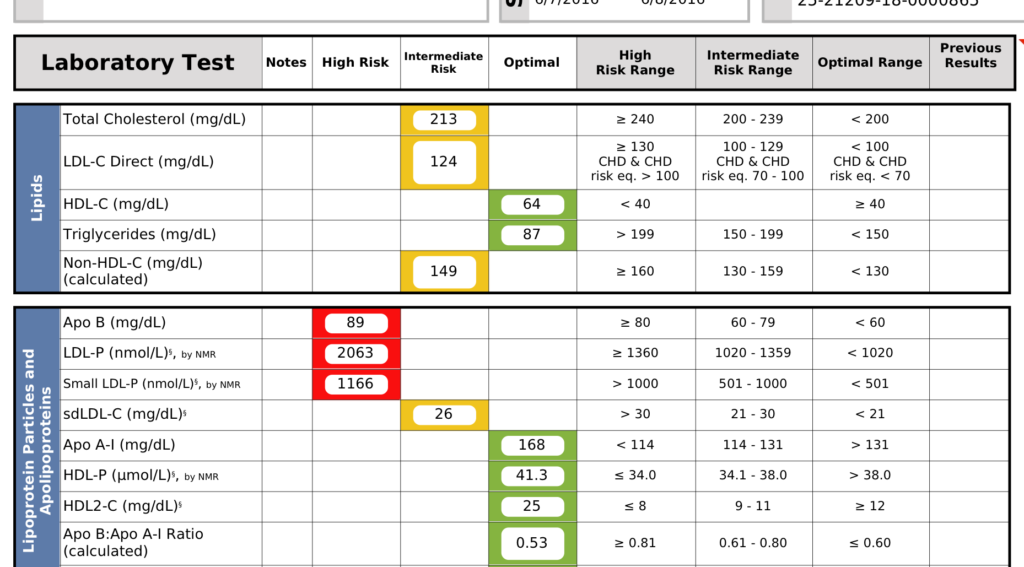
Now the 6-Week Test…
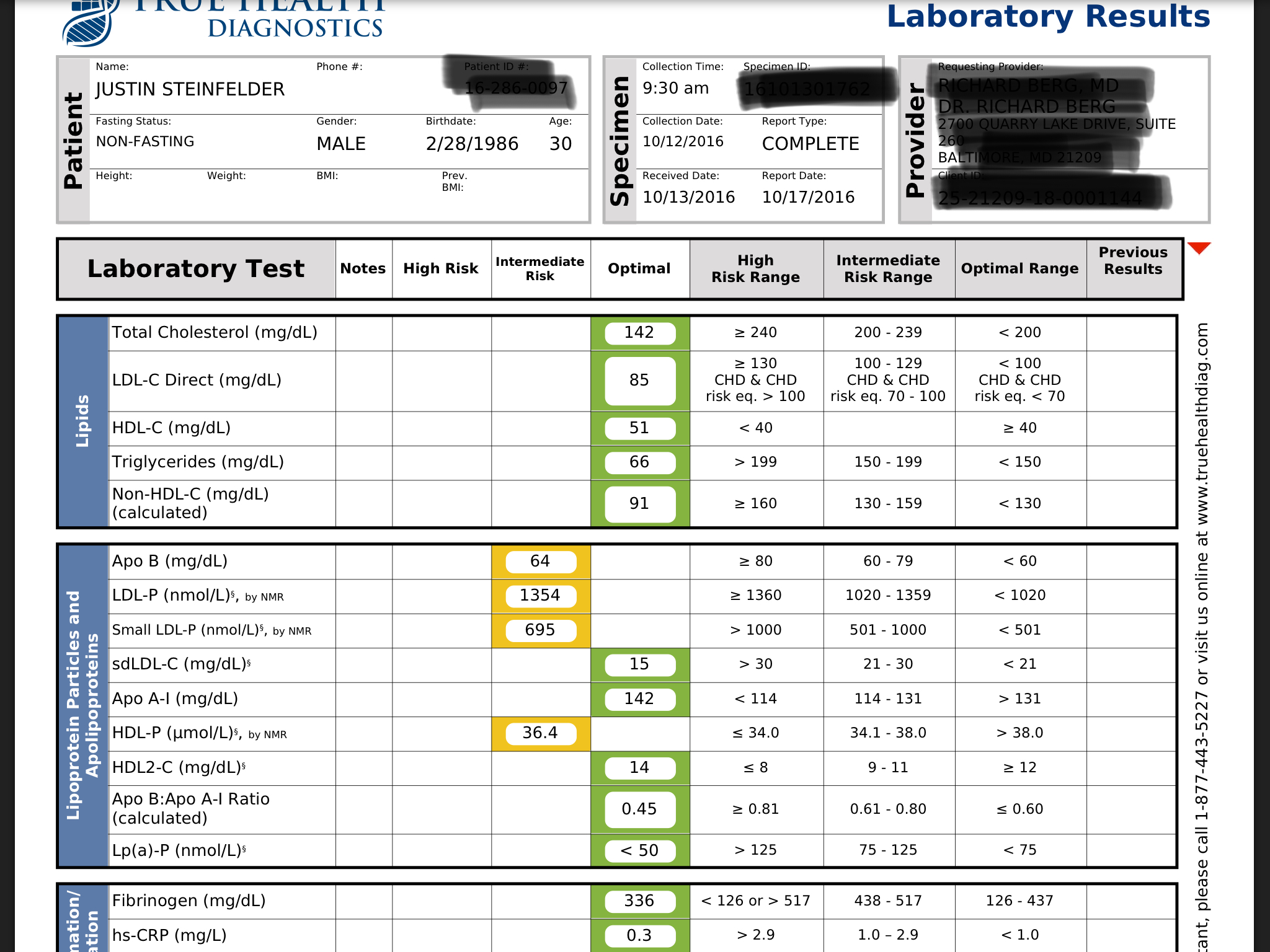
Ok – I know your eyes just glazed over upon seeing this sheet of numbers and foreign sounding terms – so allow me to just highlight what is important using the four categories from above: Cholesterol, Inflammation, Hormones, Vitamins / Minerals. I will then evaluate the findings at the bottom summary.
(1) Cholesterol.
Highlights:
- Total cholesterol decreased 71 points from 213 down to 142
- HDL decreased from 64 to 51
- LDL decreased from 124 to 85
- Small, dense LDL decreased 26 to 15
- LDL p and Small LDL(p) decreased from 2063 and 1166 to 1364 and 695.
- Triglycerides decreased from 87 to 66
- Omega 3 amount decreased
Summary Points: Good, Bad and Neutral.
- Good: All numbers went down, A LOT. The Framingham Study (a study that looked at over 15,000 participants over decades) seemed to suggest that a total cholesterol below 160 in non-elderly individuals that are not smoking, drinking a lot reduces risk of heart issues and death to below 1%.
- Potential Bad: HDL down. Some say HDL over 40 and you’re good, others, like the people behind Wellness FX think that over 60 is optimal. Several studies have suggested that higher HDL is correlated with lower heart disease and death.
- It isn’t mysterious why my body would send out less HDL – whose function, recall, is to “clean up” the cholesterol in the blood – when I am cutting my cholesterol intake massively. Having said that, I’d like it to go up above 60.
- Potential Bad: Omega 3 down. As I mentioned, there is still a lot to work out in terms of the actual benefits of omega 3 as Researchers disagree. It also isn’t tough to understand that a cutting out of all fish will likely decrease your Omega 3 intake if you don’t properly make up for it with supplements and plant-based sources.
(2) Inflammation.
Don’t worry as much about the names of the terms like CRP – just focus on the fact that they indicate inflammation and we want them to trend down over time.
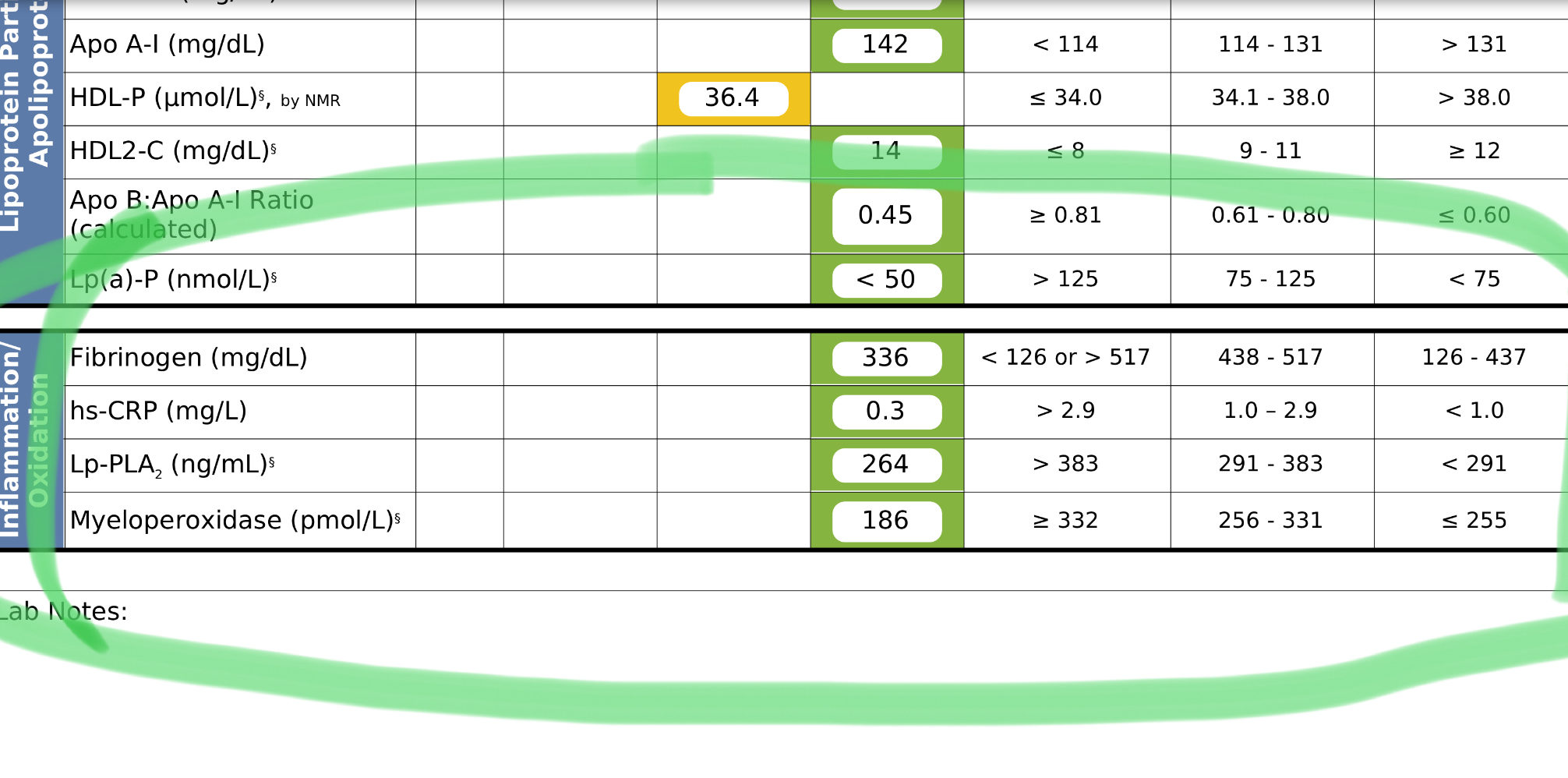
Highlights:
- C-Reactive Protein (CRP) down from 0.8 to 0.3
- Lp-PLA down from 323 (moderate risk) to 264 (optimal < 291)
- Mel – down from 249 to 186 (optimal)
- Fibrinogen down (364 to 336.)
Summary.
- Good- all measured factors dropped on average about 30%: The New England Journal of Medicine found it to be one of the most accurate of inflammation markers in predicting health concerns and also found it better even than LDL in the same predictions. Mine fell over 50%. LP-PLA has been associated with inflammation in the lungs and it fell from moderately risky to optimal.
- Still to Discover: This test did not measure TNFa and other known inflammation markers. I’d like to observe those.
(3) Hormones.
For now, let’s look at Vitamin D, testosterone and estrogen for now. We will pull in Cortisol in the final blood test.
First, where I started with Testosterone and Estrogen:
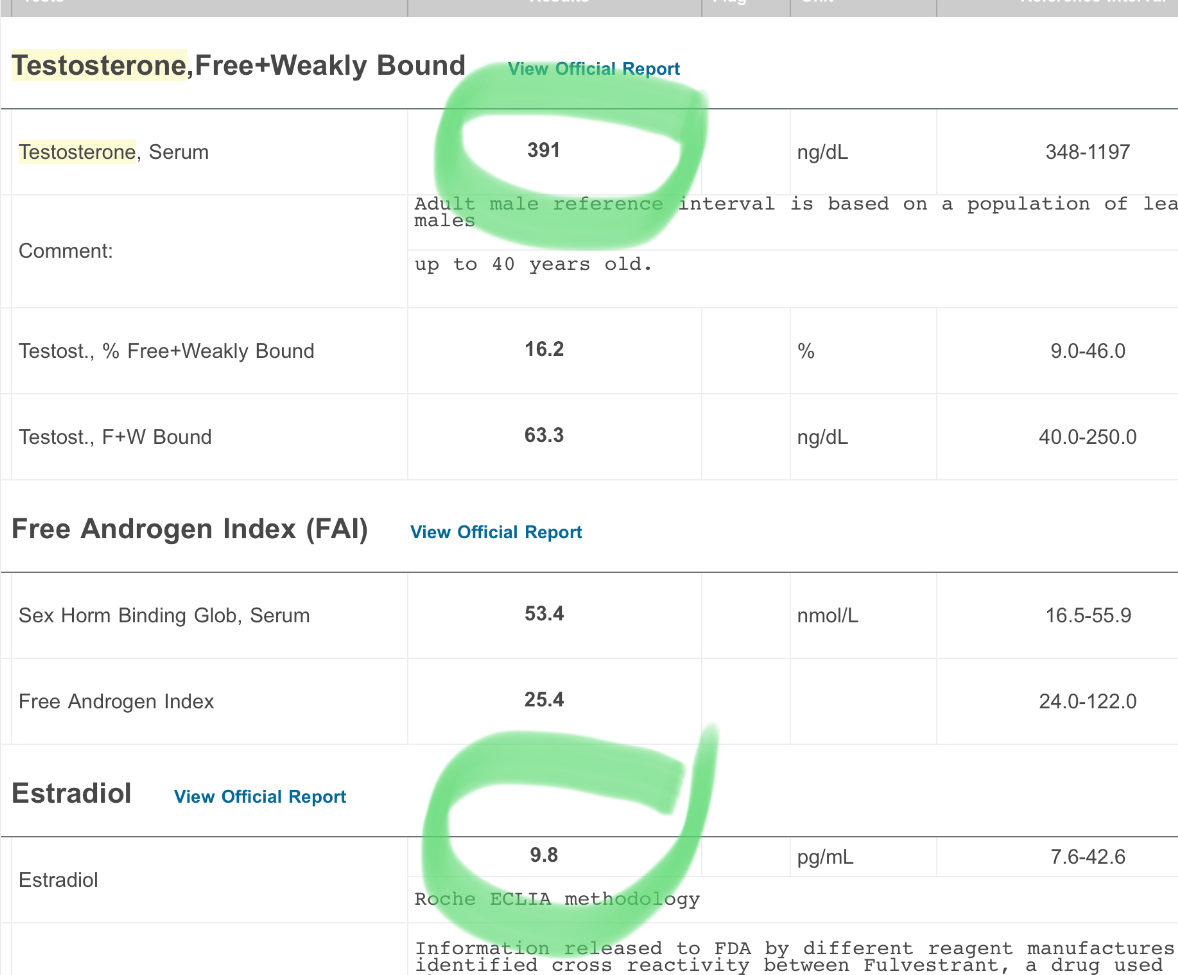
You can see here my testosterone didn’t start out particularly high – though the free testosterone – the type that is useful to us – looks fine. For this 6-Week Test, my total testosterone ended up going up (391 to 577), but I didn’t measure my free T, so that will have to be evaluated at the 6-month mark.
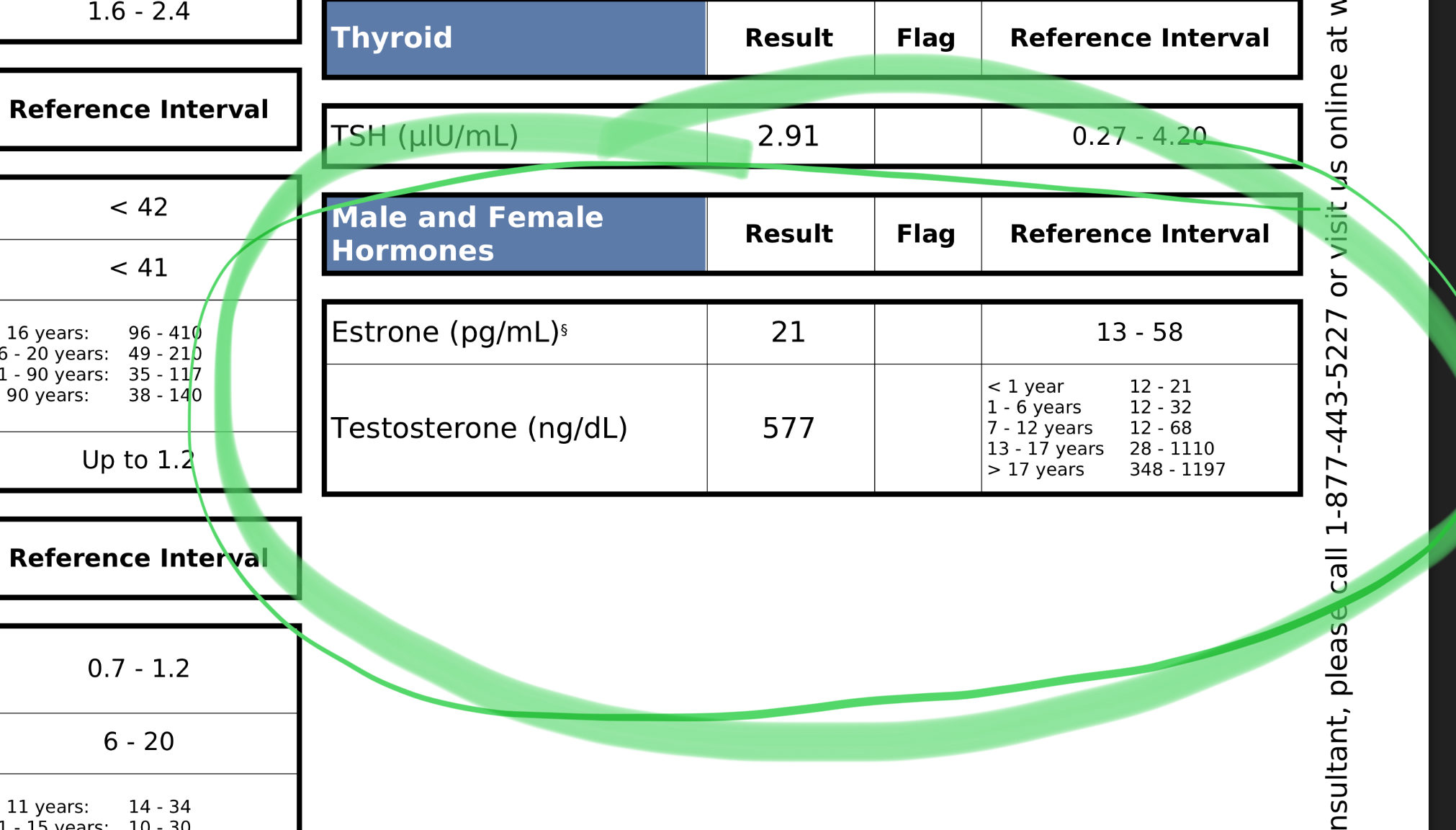
Highlights:
- Testosterone Increased (from 391 to 577)
- Estrogen Increased (from 9.8 to 21)
- Vitamin D Increased.
Commentary
- Probably Good Stuff. Testosterone increasing was a pretty cool result given that I was eating soy most days and one criticism of soy is that the opposite might happen. Vitamin D going up was a good sign that the vitamin D supplements were working.
- Things To Watch.
- For Testosterone, there are further tests that need to be run. That is because it doesn’t just matter how much is in your blood (your “serum testosterone”) but also what’s called “Free Testosterone” – this is the amount of T that is useful to us. If it is “bound” it cannot do much for us. I will get back to this below.
- Regarding Estrogen increasing – certainly something to watch, but I should note I am still well within the range of what is thought of as optimal. No boobies yet 🙂
(4) Vitamins / Minerals.
We will take a look at iron (as measured indirectly by ferritin), magnesium, B12, and calcium.
Highlights:
- All increased or stayed the same (magnesium).
Commentary.
The most reassuring part of this is that my iron INCREASED by over 20%. This is something people warn about the vegan diet. However, as I discussed in the Green Light article, beans, whole grains and seeds have a ton of iron. If you are sure to eat these consistently, you shouldn’t have a concern. Not only that, given the concerns about heme iron – the type of iron in meat – we may be wiser to seek our iron from plant-based sources regardless.
The 6 Month Test (March 2017)
Cholesterol Back Up, but still great; inflammation still down; estrogen curious; iron drops (but still OK)
In the interest of brevity – not a personal strength – I am just going to bullet point the main changes or similarities I found in the 6 month test that are notable. I will do the same for My Vegan Anniversary and then give you my conclusions.
(1) Fats
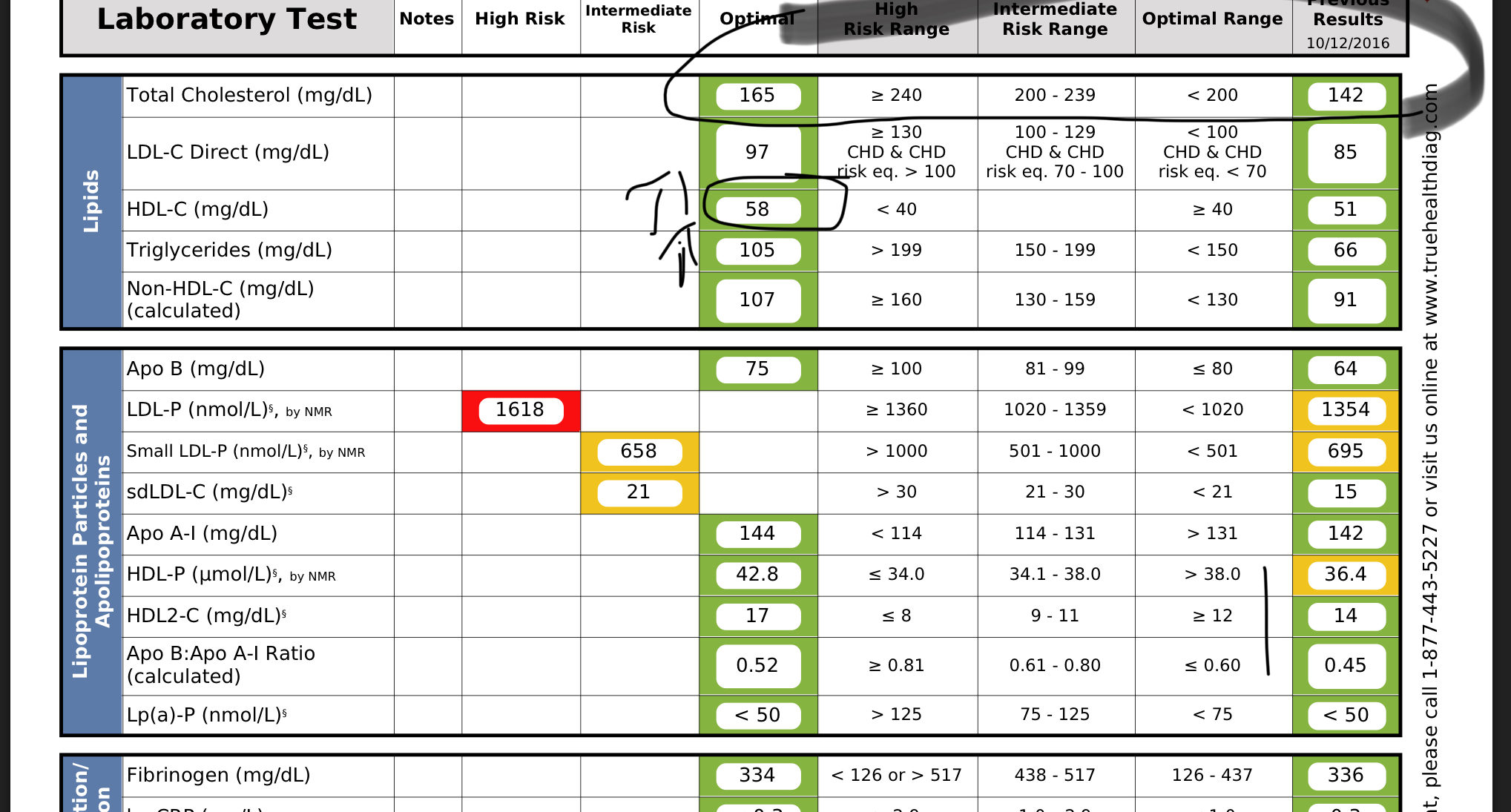
Notes:
- My triglycerides went up to 105. Wow. That is still hovering around the optimal range, but I would like to get those back down.
- Basically all of my other fats increased by about 10%. This is not great. My thought is that because this was over a greater amount of time, I wasn’t as strict with my diet and was eating, let’s say, coconut ice creams and peanut butter by the jar, which are high in saturated fat. I was also eating out more, subjecting me to more oils and mystery adds from these restaurants.
- Having said that HDL went up towards 60 – which, according to some, is the ideal range.
- Still, even with the increase, my levels are all way better than where I started.
(2) Inflammation

Note: everything here stayed the same or got better as you can see by the side-by-side comparison with last time. Lp-PLA and myeloperoxidase went down considerably.
(3) Hormones:
- My “serum (blood) testosterone” went up again.
- However, I am still worried about the amount that is being bound up, versus the amount that is “free” testosterone, and therefore useful.
- My estrogen reading here was on a different scale, this one is showing it to be low for males. That’s interesting. I’ll have to keep an eye on that.
- Vitamin D about the same (actually slightly higher) – which is good.
(4) Vitamins and Minerals:

Notes: The key scare here is my iron (actually, ferritin) which dropped a lot – even below my starting point. This is a major scare and I will have to keep an eye on it.
- **However, I am still within the advised range – i.e. I am not close to anemia. However, I am much closer than I was. Suspicious.
My Vegan Anniversary (September 2017)
Some Fats Good, Some a Concern; Inflammation Great; Testosterone Binding Questions; Iron back to good…barely
Again, I am going to point out and show the major differences, patterns and similarities that are notable from beginning to end and along the way. Then I will discuss what I learned and what things I still need to test or keep and eye on. This test was done by WellnessFX, unlike the first three, so it has some things that the others don’t have. I’ll point that out.
(1) Fats
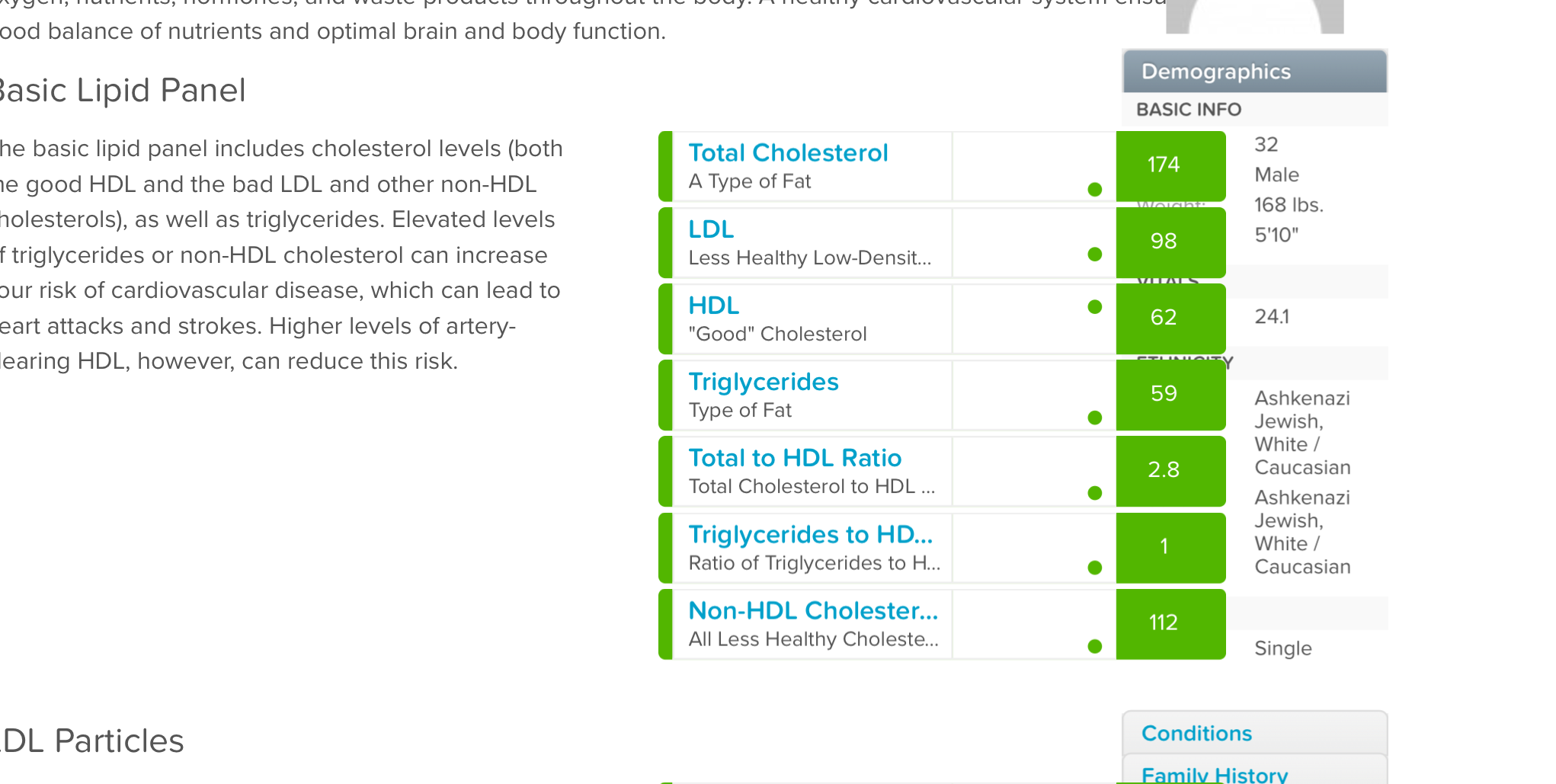
-
- Total Cholesterol. Up another 5%. However, I think I can get this back down once I am able to cook for myself regularly again (I have been a bit of a ramblin’ man over the course of this experiment).
- Still – from the beginning we are down about 20% (213 -> 174) so not too shabby.
- Small LDL. There is still a big concern here. The measurements are also different. I am going to do another test soon to keep an eye on this.
- Total Cholesterol. Up another 5%. However, I think I can get this back down once I am able to cook for myself regularly again (I have been a bit of a ramblin’ man over the course of this experiment).
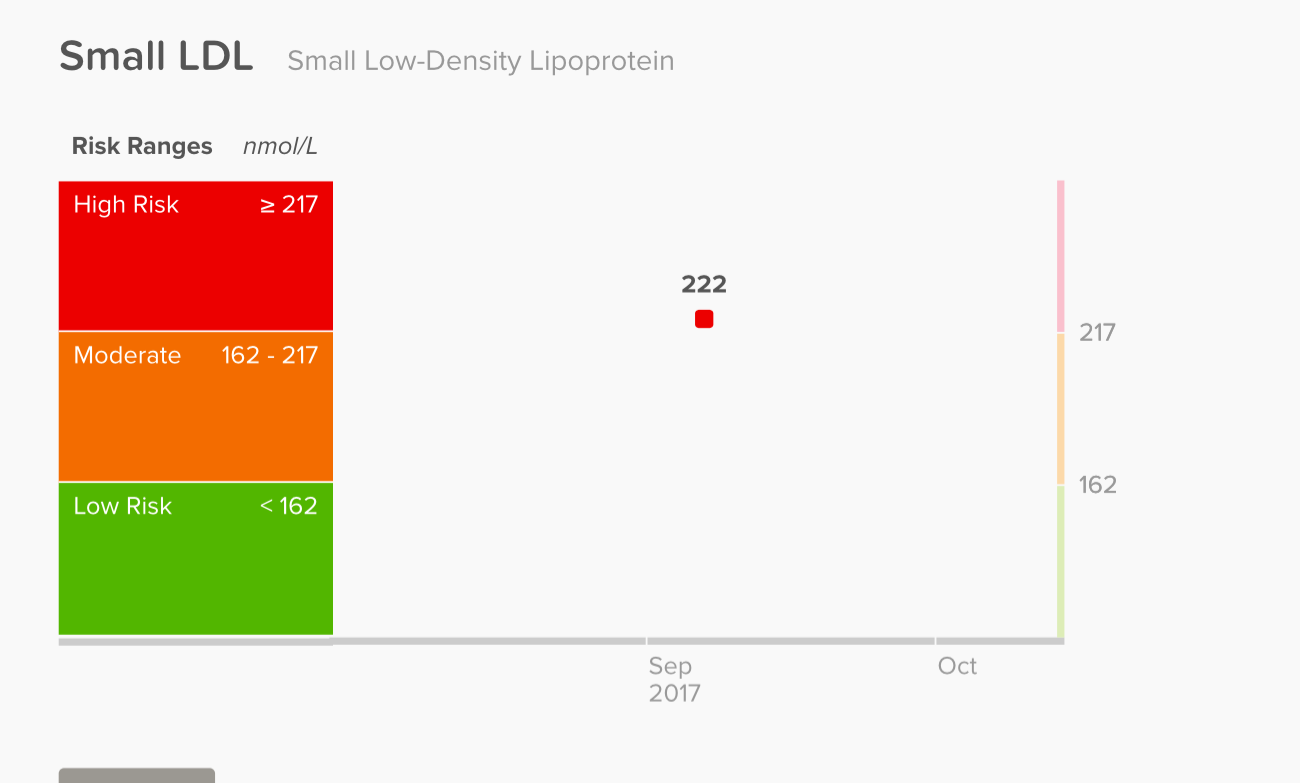
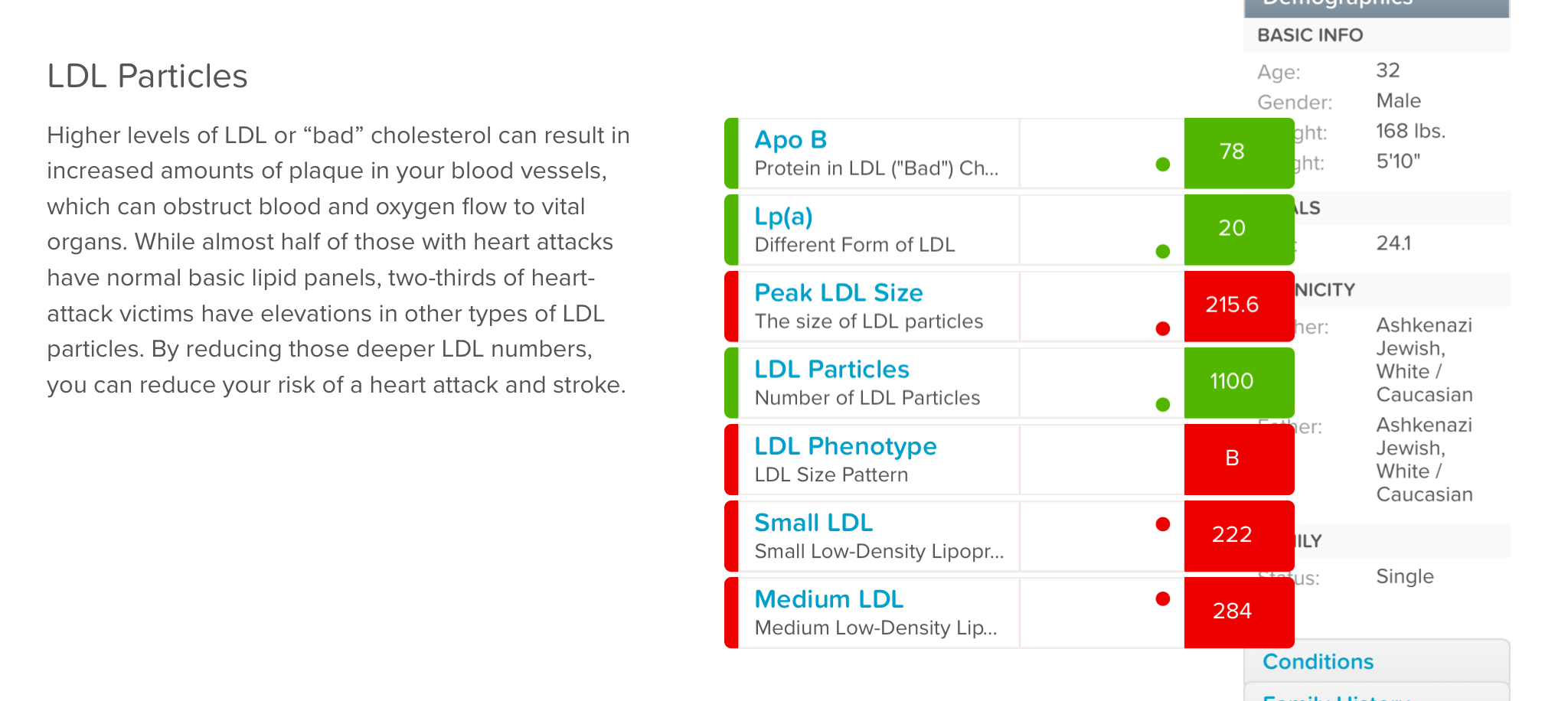
- Other fats improved from 6-month.
-
- Triglycerides back down to 59. Phew
- HDL solid at 62
- LDL below 100 at 98. Would still prefer lower
- Omega 3 Could use a boost
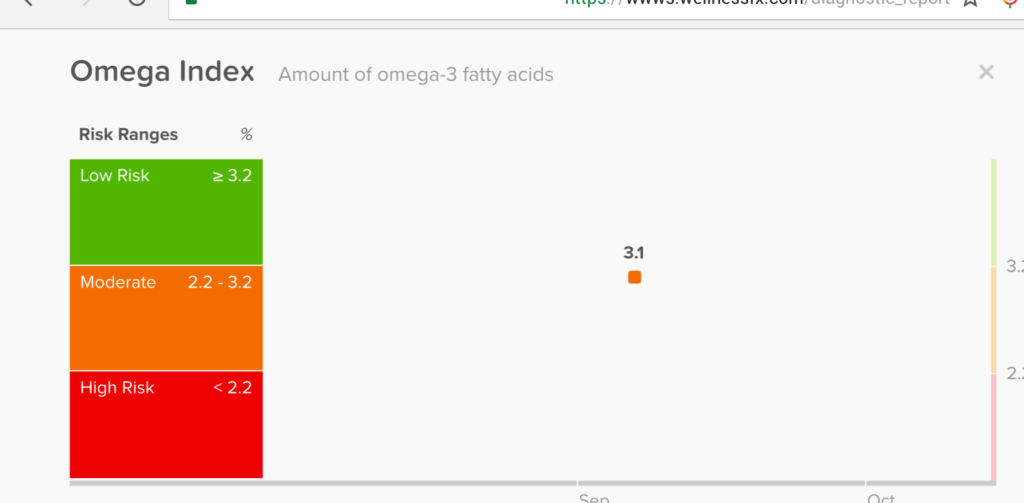
(2) Inflammation

- Both CRP and Fibrinogen are even lower —-This is great for overall disease risk factors. Remember, my CRP started at 4 times(!) this amount.
(3) Hormones
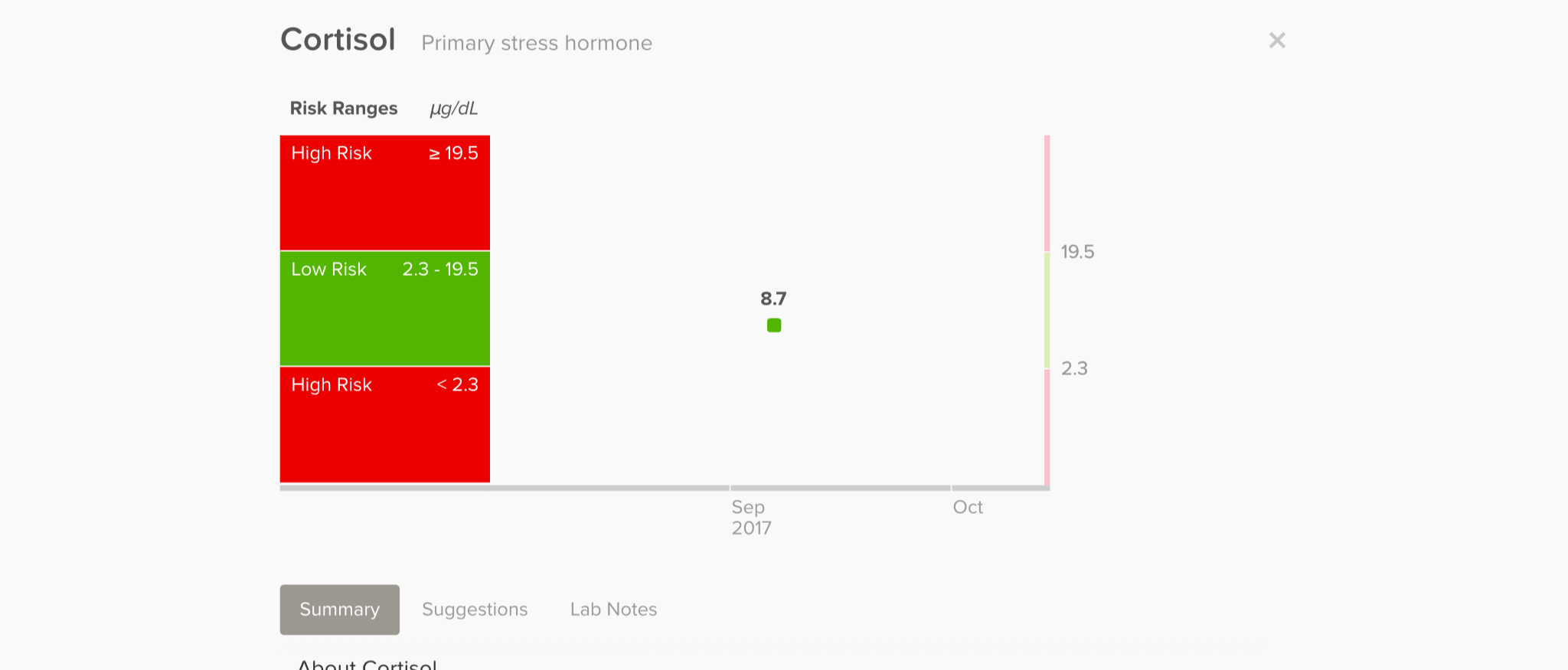
- Cortisol. My other tests did not measure it. This test shows that my levels are just about optimal. However, cortisol is something that should be measure over periods of time, as events leading up to the blood test, even days or hours before, may impact results of any given test.
- Testosterone. Overall, my testosterone is solid. My “free testosterone” – the amount that is free in the blood and not bound by SBHG which makes it not useful – is good, not great – just sneaking in the optimal range.
- I also need to keep an eye on and investigate DHEA which is another anabolic hormone. That is low.
- Estrogen. My estrogen level is basically optimal, even though I eat soy nearly daily. That seems to not be an issue for me.
- Vitamin D. 56. Very solid.
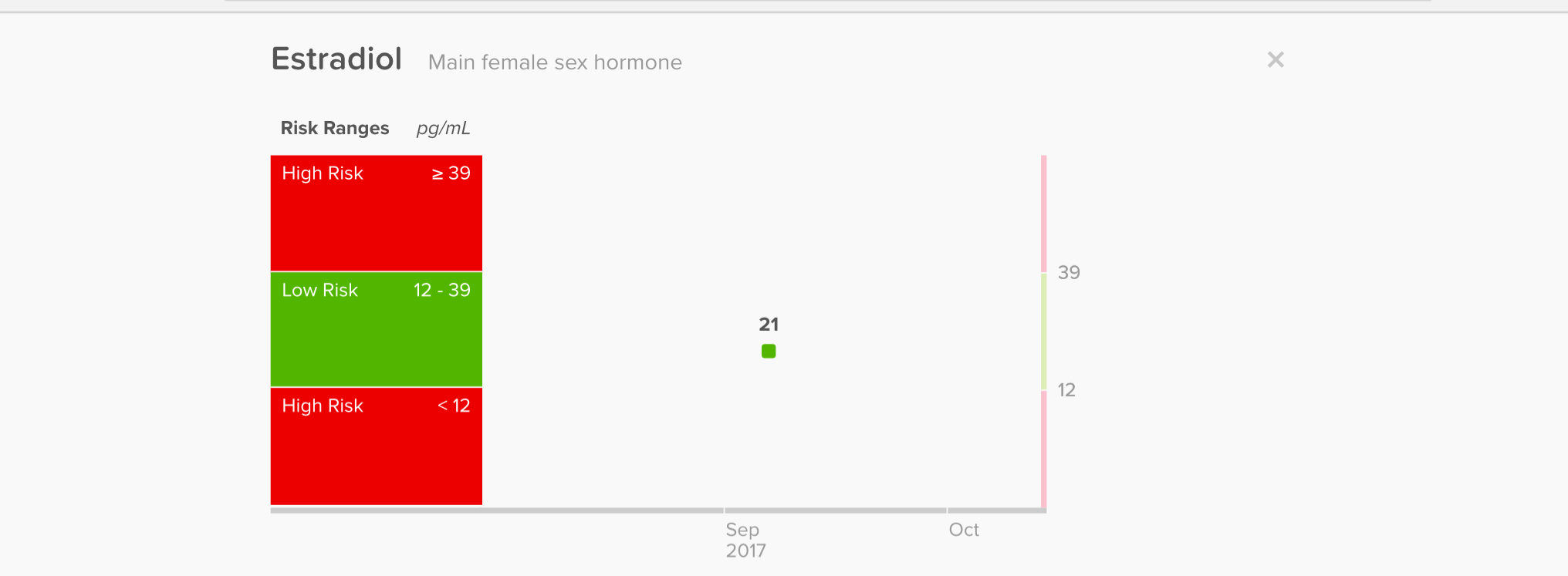
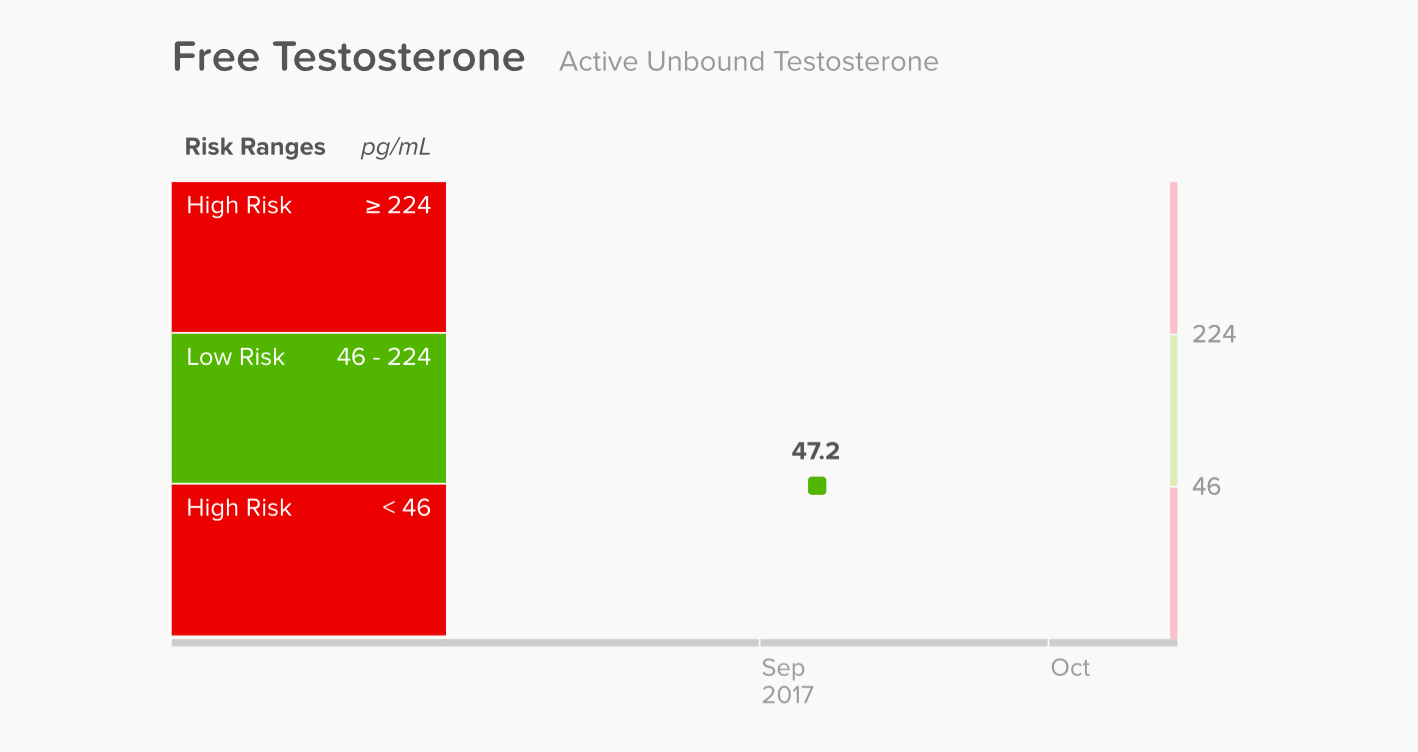
(4) Vitamins / Minerals

- Iron. As you can see, WellnessFX measures Iron in many ways. All are in optimal ranges for me, though some are teetering on the edge. I will focus on that in the future.
- All other vitamins are pretty ideal – though my magnesium is on the lower range of ideal. So we will monitor that puppy.
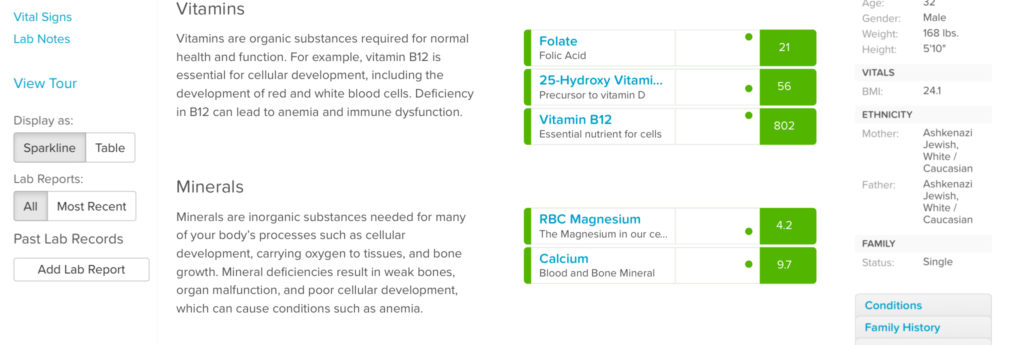
What I Learned:
Physically and Socially Hard To Start, Then Easy..er
So there she is, the One-Year Vegan experiment. I learned a ton about my body and also about the psychological factors that go into a diet overhaul like this – both mine and that of others. Here are some of the things I learned.
(1)The Food Got Better and Easier.
One thing I didn’t expect when embarking on this diet is just how fast I would forget about my taste for animal food. After the first month or so, I barely thought about it. (Recall, I was eating meat with every single meal). And I started to really, really like the way I was eating. A few friends of mine who have tried this subsequently found the same thing – they barely even think about meat or animal stuffs… well, except as applied to Italian food.
(2)It is Possible.
I taught myself that major diet overalls are possible. Prior to actually trying this, I would have probably said something like – “I love chicken, I could never give up chicken.” Others may say “I could never give up cheese” or something else. But it is possible. The first step for me was to stop living in that story – i.e. stop repeating that to myself and others – and actually give it a shot.
(3)It Might be Healthier.
In all four areas, markers in my blood generally improved:
-
- Specifically amazing was the is the 4-fold decrease in my inflammation factors.
- If inflammation truly is the “unifying theory of disease” as many experts have suggested – this is a great success.
- Fat and Cholesterol-related measurements, on average, decreased by 20-30%
- Small LDL is still a concern, but improved overall
- Hormones improved or stayed stable. Specifically, reproductive hormones are pretty solid.
- Still some questions surrounding “free testosterone”
- Vitamins and minerals in good shape.
- Iron is good, but needs to be watched
- Specifically amazing was the is the 4-fold decrease in my inflammation factors.
Having said all that, this was in no way a perfect experiment. For instance, I cut out a lot of things to get WFPB – dairy, meat, eggs. How do I know it wasn’t one of those things that lead to one or another improvement or issue? How do I know it wasn’t the increase in beans, grains and veggies? How do I know it wasn’t the addition of soy? The answer: I don’t.
The only way to get more accurate results on myself would be to add in one thing back at a time and test that. But that still would not account for the placebo effect, personal bias, or my personal genetics. (BTW, I’ve gotten the 23andMe genetics test and advise you do the same).
(4) Changes in our Diet Massively Change The Health of Our Blood.
You could see the drastic change from when I ate meat to when I totally cut out all animal. Then you could see when I started to get a little more lax with my diet over the course of the year, the cholesterol levels tended to creep up. I was eating out more, eating more white flour products, more non-dairy desserts – and this seems to have impacted my blood.
What all of this shows, for better or worse, what I ate, directly and immediately, impacted the health of my blood and body.
(5) The Hardest Part Might Be Social
Perhaps the greatest challenge of the WFPB diet is that it is a social nuisance. There are several interesting issues I ran into:
- Everyone wants to give you a hard time. “Hey, it’s the vegan boy.” Or, if you are out to the restaurant, as my brother has done probably 90% of the meals we’ve shared since 9/2016 – they will immediately point out to the waitress that you are a vegan.
- Everyone wants to place you in a box. Now, 7 months after the experiment, but still on a WFPB diet, if I decide I want to cheat with one thing – they react as if the want to say “hey, wait a second, you can’t eat that and then say you are a WFPB eater. You can’t have it both ways!!!!!” As if I need to declare to them what I eat.
- But here’s the thing about that – it is a choice, not a requirement. There is no “you can’t eat that” in reality. I can eat whatever I want. I choose to eat this way 98% of the time because the results from my experiment have shown it to be healthier overall, as far as I can tell.
- You’re Too Thin! Additionally, people who knew me in my meaty-er days will commonly say to me, like a Jewish mother from a Seinfeld episode, “you’re just too thin. You’re skin and bones. Eat! Eat!”
- What’s interesting here is they tell me it’s not “healthy,” yet, I am the one actually testing my blood and reading about this shit. As you can imagine, It is hard to take their advice of what is “healthy.“
Ok, had to get that off my chest. Thanks for bearing it.
Overall, I plan to continue a 98% WFPB diet until my blood tests suggest otherwise. Having said that, there are still some things I need to improve and keep an eye on – let’s quickly look at those and then go grab some curry cauliflower soups, eh?!
Things To Monitor and Still To Prove
(1) Small LDL. My small LDL improved a lot from the beginning of the test, however, I still need to get it down. I am going to monitor it and try cutting out saturated fat even further – from plant sources like coconut and peanuts.
(2) Testosterone. I want to make sure that my free testosterone is still solid so I can make mini-Justins, maintain a healthy, muscular structure and maintain health in general. Free testosterone is what is useful to our bodies, it appears. I am hanging in there, but barely.
(3) Iron. My iron remained in the optimal range throughout, but it is towards the bottom. Just something to keep in mind.
(4) Body Weight and Muscle. I started in 2016 at a weight of around 182. At the time of my blood test in September 2017, I was 168. I now am about 164. I don’t mind that drop in weight – much of it was definitely fat – but I have lost a lot of muscle.
Now, around the same time I adopted this diet, I had stopped lifting weights – something I had done consistently for the last 15 years. So, muscle loss is expected. This was due to multiple injuries, most of whcih are since healed. Some I addressed in this article about Tom Brady’s TB12 center.
The next test is to see if I can build back some of that muscle on a WFPB diet. I’ll report back…
Until next time – eat your veggies. Oh, and, get a god damn blood test, will ya?!!

Besos,
Justy

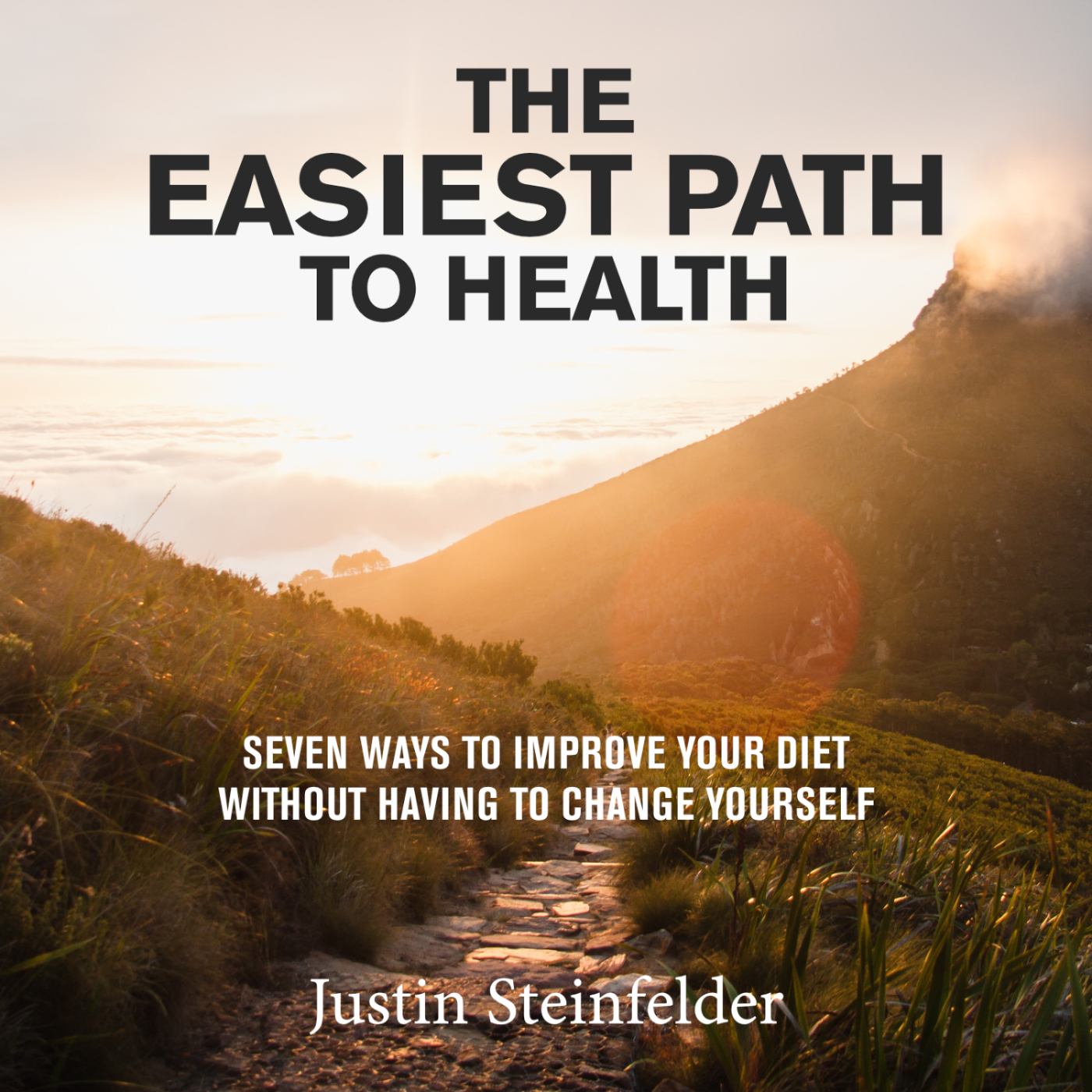

2 Comments on “Freak to Geek Part II: The Results”
Interesting results! I commend you on your dedication and structured program documenting changes in blood work. Your results also highlight the importance of genetics in cholesterol physiology. Dietary habits are essential, but modern medicine should also be complimentary. We can discuss more in person at a local coffee shop…
Glad to read Part 2. That was a lot of dedication, Justin. I have to say, you are very disciplined. I don’t think the mommy could do it. But, you have heped me so much and I really appreciate it! I feel a lot better too! I do agree with you on the social aspect!
I think I nead a blood test!
I am so ptoud of you and I love you so much!
Love and hugs,
The Momzy💜💜❤️❤️